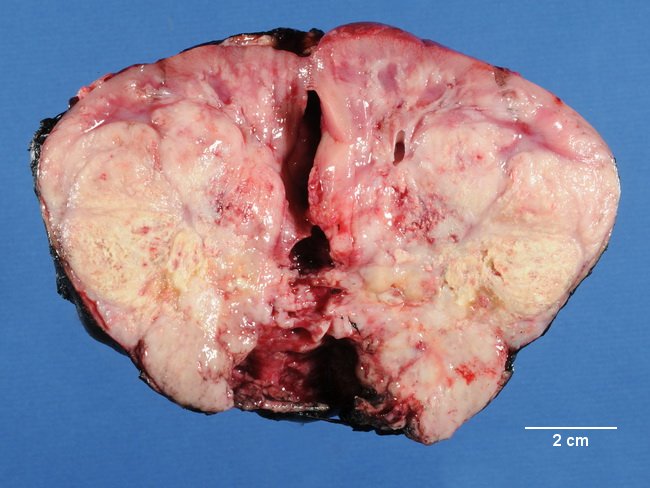Rhabdoid Tumor : Clinical & Gross Features


Comments:
Clinical Features: Rhabdoid tumor of kidney (RTK) makes up 1%-2.5% of all pediatric renal neoplasms. Both RTK and its CNS counterpart - atypical teratoid/rhabdoid tumor (AT/RT) are usually seen in infants and children by the age of 5 years. Median age at diagnosis is 18 months. More than 80% of cases are diagnosed by the age of 2 years. Extrarenal SMARCB1-deficient tumors show a wider age range. Rare cases of classic RTK have been described in adults. The most common presentation is abdominal mass and hematuria. Some patients develop hypercalcemia. Widespread metastases to lymph node, liver, and lung are common at the time of diagnosis. Among newly diagnosed patients with RTK, 25%-30% have germline mutations in SMARCB1. They typically develop RTK and a synchronous or metachronous AT/RT in posterior cranial fossa or an AT/RT and a rhabdoid tumor in lung or liver. These are second primaries rather than metastases from the renal neoplasm. These patients are also at risk of developing schwannomatosis. Gross Pathology:
RTKs appear as relatively circumscribed, large, soft, pale, fleshy friable mass with areas of hemorrhage and necrosis. Satellite nodules are frequent. Bilateral RTKs occur but are much less common than bilateral Wilms tumor. Image courtesy of Dr. Jean-Christophe Fournet, Paris, France; humpath.com; Used with permission.



